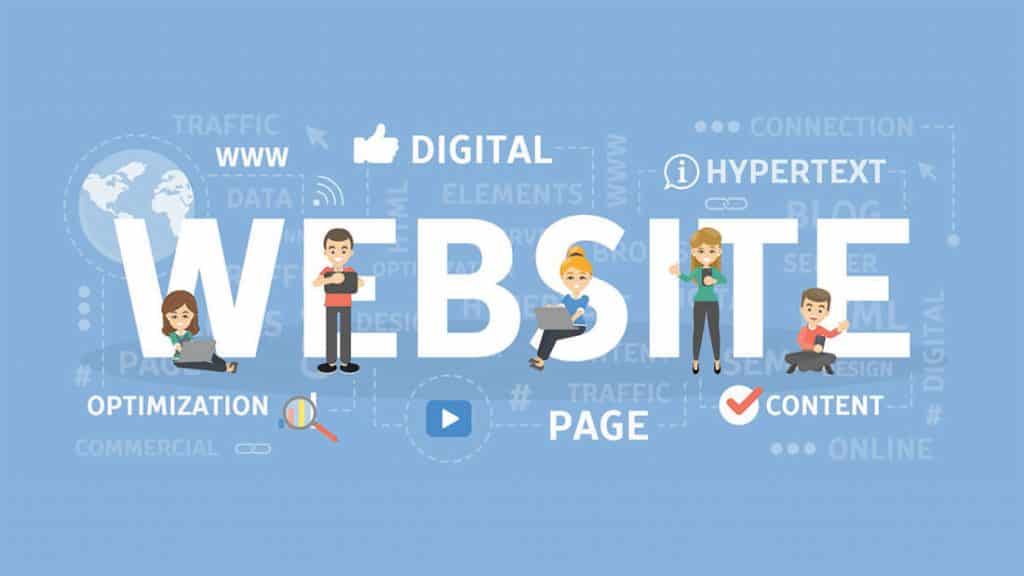
A website audit can maximize benefits from your content and reveal faults costing you hundreds (if not thousands) in revenue losses each day.
How is this possible?
Neglect.
Many website owners have a "set it and forget it" mentality. A site owner is happy with the launch and rarely makes changes afterward save for a few adjustments. This is okay within its launch window, but underlying problems happen immediately.
What are these problems?
How can a site owner do a website audit to increase usability and profitability? Read on and find out.
Don't Get Lazy with Website Ownership: You're Losing Out on These Benefits

A lot, actually.
Unbeknownst to many owners your website could be costing you the opportunity for lead generation and conversions. It's much like buying a car at face value and months later realizing it's a lemon.
What can you lose out on as a lazy site owner? Plenty...
- Organic Traffic
- Low-quality on-page SEO prevents even the best content from higher search engine positions.
- Usability
- Barriers preventing visitors from having a pleasant experience. Failing to provide a great experience increases bounce rates.
- Error Checking
- Technical errors preventing the site from functioning 100% on the client-side.
- Conversion
- Disruptive creative, copy, or layout preventing site engagement. This includes the sales funnel.
- Social Marketing
- Clunky or nonexistent features making sharing a chore for site visitors.
- Measurements
- ... and a general understanding of the website performance.
A site owner receiving reports has no basis if there's nothing to compare. A website audit presents an alternative for measurement.
How to do a Website Audit: A DIY Routine to Improve Website Usability and Profitability

Why are you spending this time to improve the site? Is it sales? Is it usability?
Having a goal will dictate how you'll refine the site and its redevelopment. The audit provides the insight but you (and the team) provide the vision. A goal will guide time and effort to those actions with the highest return on investment.
Got one in mind? Great! Let's move onto the technicals.
Phase 1: Identify the Performers and Underperformers
The goal of a website audit isn't a complete redesign and launch of the site. It would cost too much. Plus, it would eat up a lot of time.
Instead, audits identify key performers and underperformers. This lets you improve pages showing positive ROI. Or, remove pages creating problems.
Tools you'll use include:
- Google Analytics
- SEMRush
- Screaming Frog
- Raven Tools
Start the service and begin with a general report of the site. This provides data ranking the site pages. Sort by traffic and conversions as this identifies performers and underperformers.
You may choose to cross reference results with several tools. Combine many reports to fully understand which pages are worth the time and effort.
Ranking Reports
Ranking reports offer a bonus set of data when compiling information. Several SEO tools include keyword ranking and positions. This could dictate your efforts in more ways than one.
Example:
Page A receives 1,000 visits/mo at position #2 for a keyword with a monthly search volume of 2,000
Page B receives 250 visits/mo at position #9 for a keyword with a monthly search volume of 10,000
A bump to Page A makes sense because it's performing well. But, Page B is the low-hanging fruit with greater potential.
Phase 2: Compile and Categorize the Data
Now comes the tedious part...
... you will use the reporting to manually sort through each page. Assign each page with a priority (1 - 5, 1 being highest) based on criteria of having these present:
- Defined keyword
- On-page SEO
- Valuable content
- Navigational "flow"
- Call-to-action
- Social elements
The important pages may include home, product, and thank you page. Though, efforts could go toward blog content delivering quality lead generation. This prioritization will reveal the contenders.
Phase 3: Update and Improve
Now the fun begins! Do it yourself optimization.
This can be time-consuming and tedious, but with a bit of knowledge, it's not impossible. The process will have you update and improve performing pages and reduce or drop the underperformers.
Keep in mind that high performing pages likely have great page authority and backlinks and likely rank for keywords. They rank well but aren't performing 100%. They're ripe for optimization.
How to Update and Improve Content
- Optimize the title and meta description to improve click through
- Expand on the content topic integrating narrative SEO techniques
- Remove unnecessary elements preventing engagement and action
- Test new pricing and call-to-actions
- This is the time where A/B testing shines. You will use the previous rendition against the updated page. Use whichever provides a higher ROI. Then, continue testing individual elements with the goal of improving conversions.
Eliminate Underperforming Pages
When it comes to content, less is more.
Too much content can cannibalize keywords and distract your users.
The rush to create content for every keyword diverts ranking signals. One, massively helpful page is better than the same information split into several short pages that don't fully answer your users' question.
These underperformers may cannibalize important keywords. The cannibalization stops an important page from ranking because it's used. The smart decision is redirecting the split topics to a single page hosting all the value.
Phase 4: Rinse and Repeat
Make an effort to do a site audit (at least) yearly. This will ensure the site remains competitive. And, continues driving lead generation and sales.
No Time for a Website Audit? Do This, Instead

SEO tools provide handy reports for identifying pages. But, you're still stuck manually ranking pages based on priority and value. Could you imagine the time and resources needed for a massive, thousand+ page site?
Don't have the time for this? Get a professional SEO to do it.
Expert SEOs will apply methods and systems to uncover what's going on with your website. And they have the knowledge required to interpret what they find and correct exactly where your site's falling down.
For example, our Narrative Intel service takes a deep dive into your website. We'll test and diagnose more than 47 of the important factors that could be holding your site back then provide actionable reporting along with a gap analysis to outdo your competition.
So, you have two choices:
- Slog through and do a site audit with the information we provided;
- Focus on the fun part of building your business and have us do the tedious SEO work.
Which sounds good to you?
SEO IS A BATTLE. ARM YOURSELF WITH NARRATIVE INTEL.
Get in touch! Use our contact page or complete the contact form below to learn more about how we can help your site and business grow.
